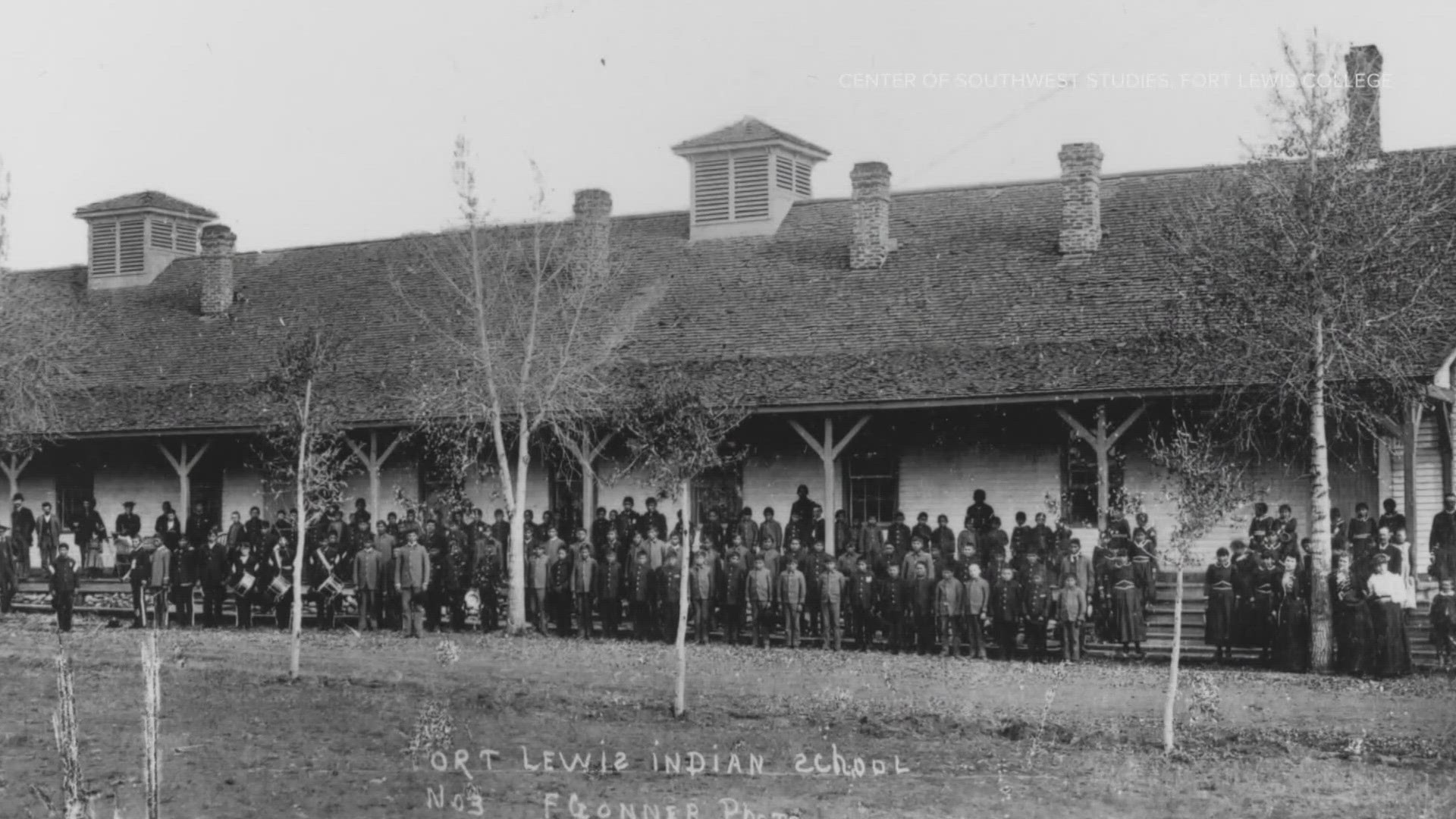DENVER — The state of Colorado has new insight to the lived experiences of Indigenous peoples at former Native American boarding schools, and better understanding of potential burial places of students who died while attending the schools.
On Friday, History Colorado released the executive summary of the research led by State Archaeologist Dr. Holly Norton. The document was written in accordance with the Federal Indian Boarding School Research Program Act (HB 22-1327), which Gov. Jared Polis signed into law May 24, 2022.
Before the law arrived for Polis' signature, the state legislature recognized the generational trauma that stemmed from these federally funded schools, declaring in part:
The trauma from federal Indian boarding schools crosses generational boundaries and the boarding school policy resulted in long-standing intergenerational trauma, cycles of violence and abuse, disappearance of Native people, premature deaths, mental health disorders, and substance abuse in Native communities.
Through the new law, History Colorado was directed to conduct an intensive research program focusing on the former federal Native American boarding school in Hesperus, Colorado, commonly referred to as the Fort Lewis Indian Boarding School.
Resulting research identified nine federally supported institutions in Colorado, specifically financed via the agency that today is known as the Bureau of Indian Affairs (BIA), between 1880 and 1920. According to the executive summary, these nine schools included on-reservation day schools, on-reservation boarding schools and off-reservation boarding schools.
Researchers said each school served different roles within the federal Indian education policy, but ultimately, the goal was to assimilate Indigenous peoples.
Before the on-reservation schools were created, students attended off-reservation boarding schools. The most prominent included the first established indigenous boarding school, the Teller Institute in Grand Junction and the Fort Lewis Indian Boarding School at the site of the former Fort Lewis military post in Hesperus.
Both operated as agricultural labor schools, which, as explained in the executive summary, meant "large portions of their day were related to doing labor that kept the school fed and running, including agricultural work and 'domestic chores' such as laundry."
The report executive summary also details how both of the institutions used what is known as the “outing system." This was an informal program where "students were placed with families over summer vacations or for the duration of an entire school year, to work for under-market wages as an agricultural or domestic laborer."
History Colorado's research also unveils burial sites for children who died while attending the Fort Lewis Indian Boarding School and the Teller Institute. The executive summary reads in part, "Geophysical investigations at the Fort Lewis Indian Boarding School cemetery were completed in November 2022, and included ground penetrating radar (GPR, magnetometer, high-resolution photogrammetry and lidar)."
The executive summary provides promises that the full report will detail the boundaries of the cemetery at the site of the Fort Lewis Indian Boarding school.
The full report, entitled “Federal Indian Schools in Colorado, 1880-1920,” was released on June 30, 2023, to impacted tribes in Colorado. State leadership received an executive summary, as well as recommendations. History Colorado named the following parties as those with some capacity of report information:
- Colorado Commission of Indian Affairs (CCIA)
- The Southern Ute Indian Tribe
- The Ute Mountain Ute Tribe
- The Colorado State House of Representatives’ Judiciary Committee
- The Colorado State Senate’s Judiciary Committee
- The Joint Budget Committee of the General Assembly of Colorado
- The Office of Governor Jared Polis
- The Board of Trustees of Fort Lewis College
In August, the report was released to additional tribes that reside outside of Colorado who may have also been impacted by the state's boarding schools, according to History Colorado.
History Colorado said the full final report will be publicly released on Oct. 3, 2023, after the tribal nations impacted by this history have had time to review the findings, consistent with government-to-government relationships with tribal nations.
> You can read the full executive summary of History Colorado's report here:
SUGGESTED VIDEOS: Latest from 9NEWS

